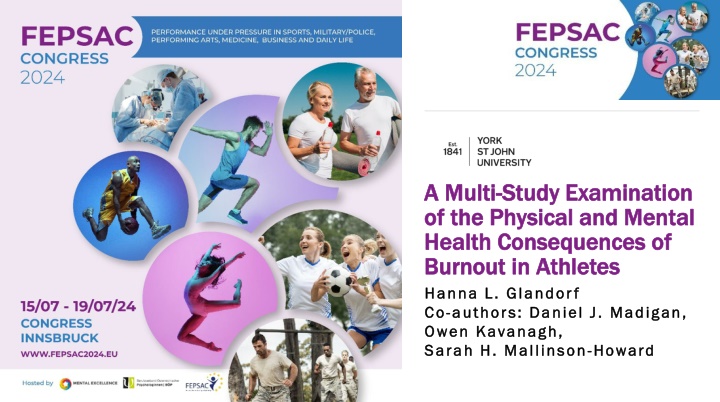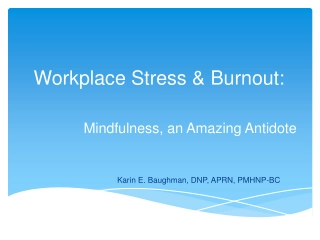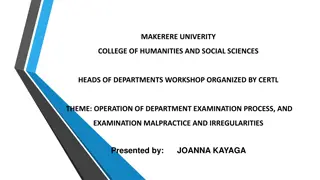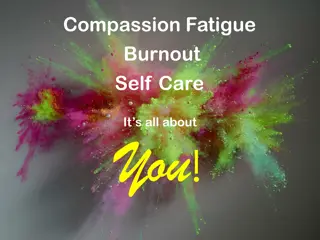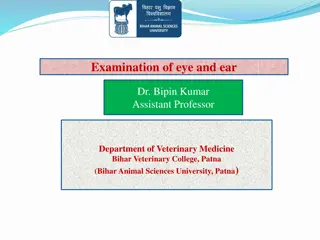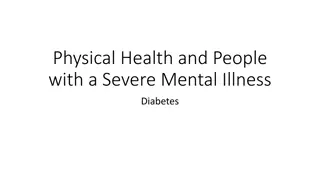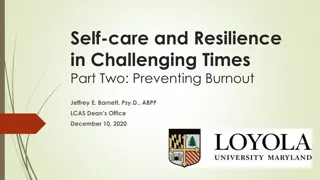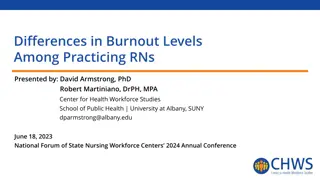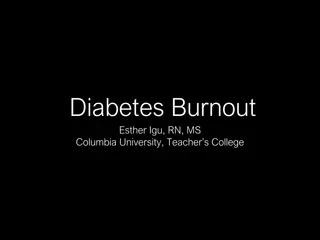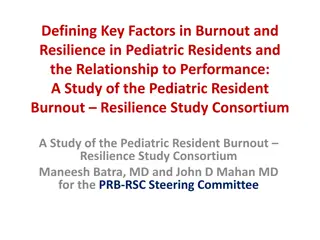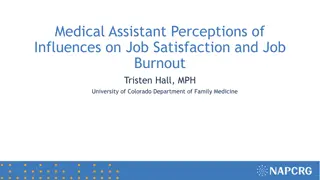Study Examination of Physical and Mental Health Consequences of Burnout in Athletes
This study explores athlete burnout as an occupational phenomenon, its impact on health, physiological effects, and predictive nature. Findings reveal connections between burnout and negative mental health variables, physical symptoms, and more. Insights from systematic reviews and meta-analyses shed light on the association between burnout and health outcomes.
Download Presentation

Please find below an Image/Link to download the presentation.
The content on the website is provided AS IS for your information and personal use only. It may not be sold, licensed, or shared on other websites without obtaining consent from the author.If you encounter any issues during the download, it is possible that the publisher has removed the file from their server.
You are allowed to download the files provided on this website for personal or commercial use, subject to the condition that they are used lawfully. All files are the property of their respective owners.
The content on the website is provided AS IS for your information and personal use only. It may not be sold, licensed, or shared on other websites without obtaining consent from the author.
E N D
Presentation Transcript
A Multi A Multi- -Study Examination Study Examination of the Physical and Mental of the Physical and Mental Health Consequences of Health Consequences of Burnout in Athletes Burnout in Athletes Hanna L. Glandorf Hanna L. Glandorf Co Co- -authors: Daniel J. Madigan, authors: Daniel J. Madigan, Owen Kavanagh, Owen Kavanagh, Sarah H. Mallinson Sarah H. Mallinson- -Howard Howard
What is athlete burnout? An occupational phenomenon - International Classification of Diseases (WHO, 2022) Emotional and Emotional and physical physical exhaustion exhaustion Reduced sense of Reduced sense of accomplishment accomplishment Sport devaluation Sport devaluation Based on Raedeke & Smith (2001)
Why would burnout relate to health? Cognitive Cognitive appraisal appraisal Physiological responses (e.g., insomnia, illness susceptibility) Multisystem dysfunction (HPA axis, immune system, anabolic activity, cardiovascular system) Resources Allostatic overload Demands Smith s (1986) cognitive-affective model of athlete burnout and McEwen & Stellar s (1993) allostatic load theory
Is burnout associated with health? Methods Methods Systematic review + multilevel meta-analyses Results Results Negative Mental Negative Mental Health Variables Health Variables (e.g., depression, insomnia) 54 studies N = 13,976 athletes Positive Positive Mental Health Variables Health Variables (e.g., satisfaction) Mental Burnout Burnout Physical Physical Health Variables Variables (e.g., physical symptoms) Health Glandorf et al. (2023)
Does burnout predict health? Methods Methods 3-wave design (6 months) 267 athletes (Mage = 20.87) Results Results Random-intercept cross-lagged panel model Athlete burnout (ABQ), depressive symptoms (CES-D), sleep disruptions (PSQI), life satisfaction (SWLS), physical symptoms (PSC), illness (WURSS-11) Exhaustion W3 W3 W3 Devaluation Total Burnout Exhaustion W1 W1 W1 Exhaustion W2 W2 W2 Devaluation Total Burnout Devaluation Total Burnout .19 .19 .26 .26 - -.48 .48 .23 .23 Life Life Sleep Disruptions Satisfaction Life Sleep Disruptions Satisfaction Sleep Disruptions Satisfaction Depressive Symptoms W1 W1 W1 Depressive Symptoms W2 W2 W2 Depressive Symptoms W3 W3 W3 Glandorf et al. (in press)
Does burnout have physiological effects? Methods Methods N-of-1 design (4 athletes) Athlete burnout (ABQ) Results Results Dynamic regression model + visual analysis Acute Acute - -.56 .56 Chronic Chronic RSA Testosterone Acute Acute (6 months): SCortisol, testosterone, DHEA-S, IgA, CRP Chronic Chronic (12 months): HCortisol, HbA1c, lipids, DNA methylation - -.98 .98 DEV DHEA-S, IgA - -. .94 94 Glandorf et al. (in prep)
Burnout impacts health Cognitive Cognitive appraisal appraisal Psychological responses (e.g., depression) Multisystem dysfunction (HPA axis, immune system, anabolic activity, cardiovascular system, nervous system) Resources (e.g. sleep, life satisfaction) Allostatic overload Demands Smith s (1986) cognitive-affective model of athlete burnout and McEwen & Stellar s (1993) allostatic load theory
References Glandorf, H. L., Madigan, D. J., Kavanagh, O., & Mallinson-Howard, S. H. (2023). Mental and physical health outcomes of burnout in athletes: A systematic review and meta-analysis. International Review of Sport and Exercise Psychology. Advance online publication. Glandorf, H. L., Madigan, D. J., Kavanagh, O., Mallinson-Howard, S. H., Donachie, T. C., Olsson, L. F., & Rumbold, J. L. (in press). Athlete burnout and mental and physical health: A three-wave longitudinal study of direct and reciprocal effects. Sport, Exercise, and Performance Psychology. Glandorf, H. L., Madigan, D. J., Kavanagh, O., & Mallinson-Howard, S. H. (in prep). Mental and physical health outcomes of burnout in athletes: A systematic review and meta-analysis. Examining biomarkers of athlete burnout: An exploratory, longitudinal N-of-1 study. McEwen, B., & Stellar, E. (1993). Stress and the Individual. Archives Of Internal Medicine, 153(18), 20-93. Raedeke, T. D., & Smith, A. L. (2001). Development and preliminary validation of an athlete burnout measure. Journal of Sport and Exercise Psychology, 23, 281-306. Smith, R. (1986). Toward a cognitive-affective model of athletic burnout. Journal of Sport Psychology, 8(1), 36-50. World Health Organization. (2022). ICD-11: International classification of diseases (11th revision). https://icd.who.int/
